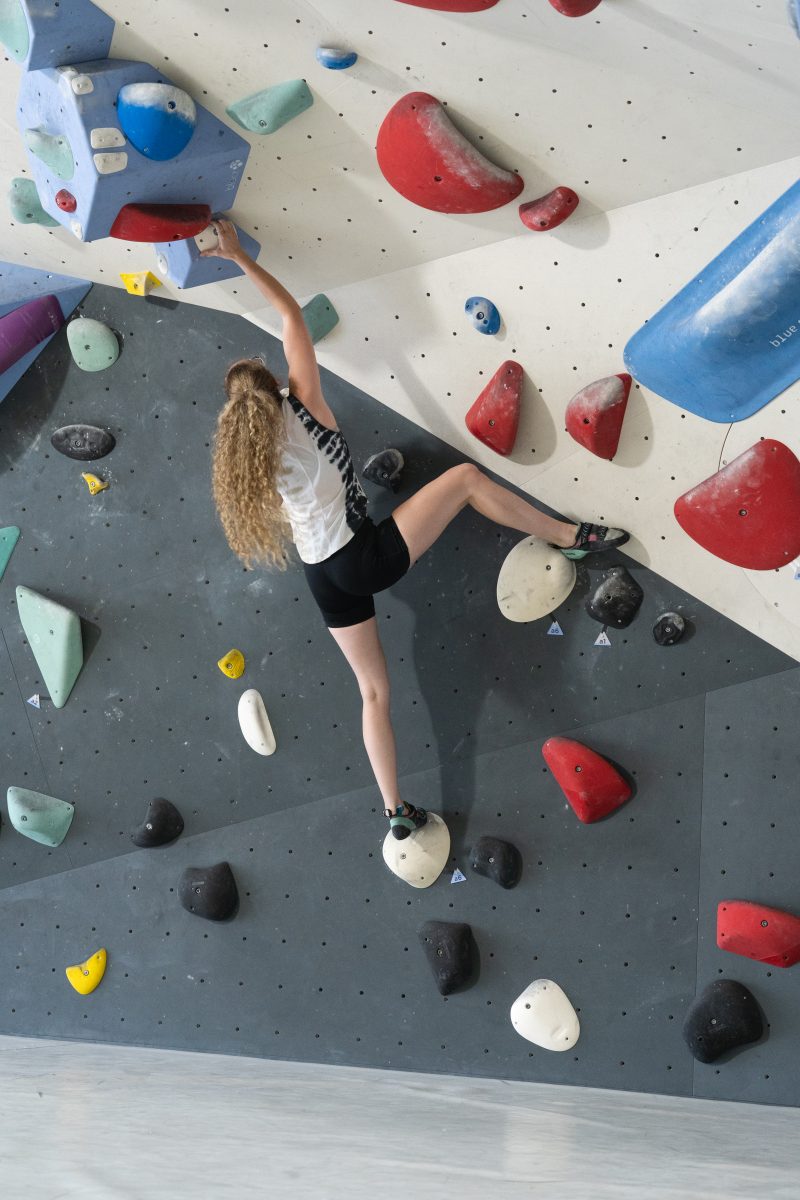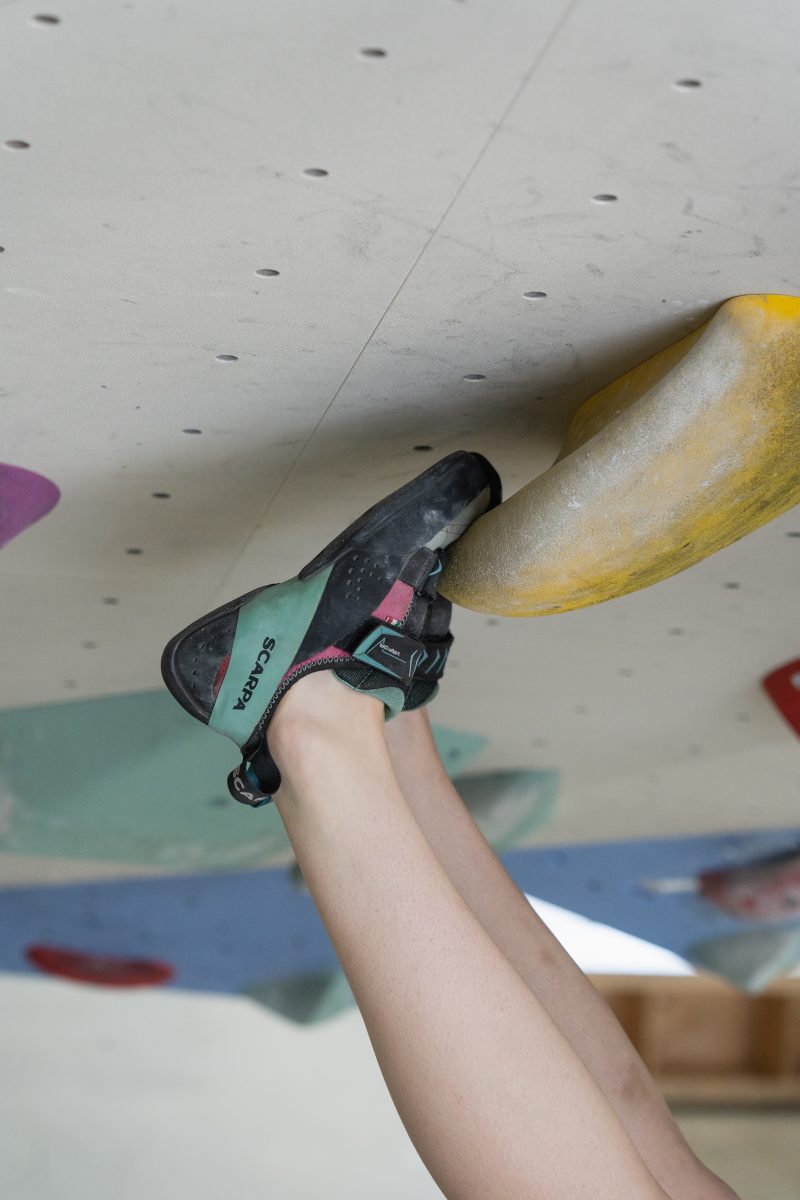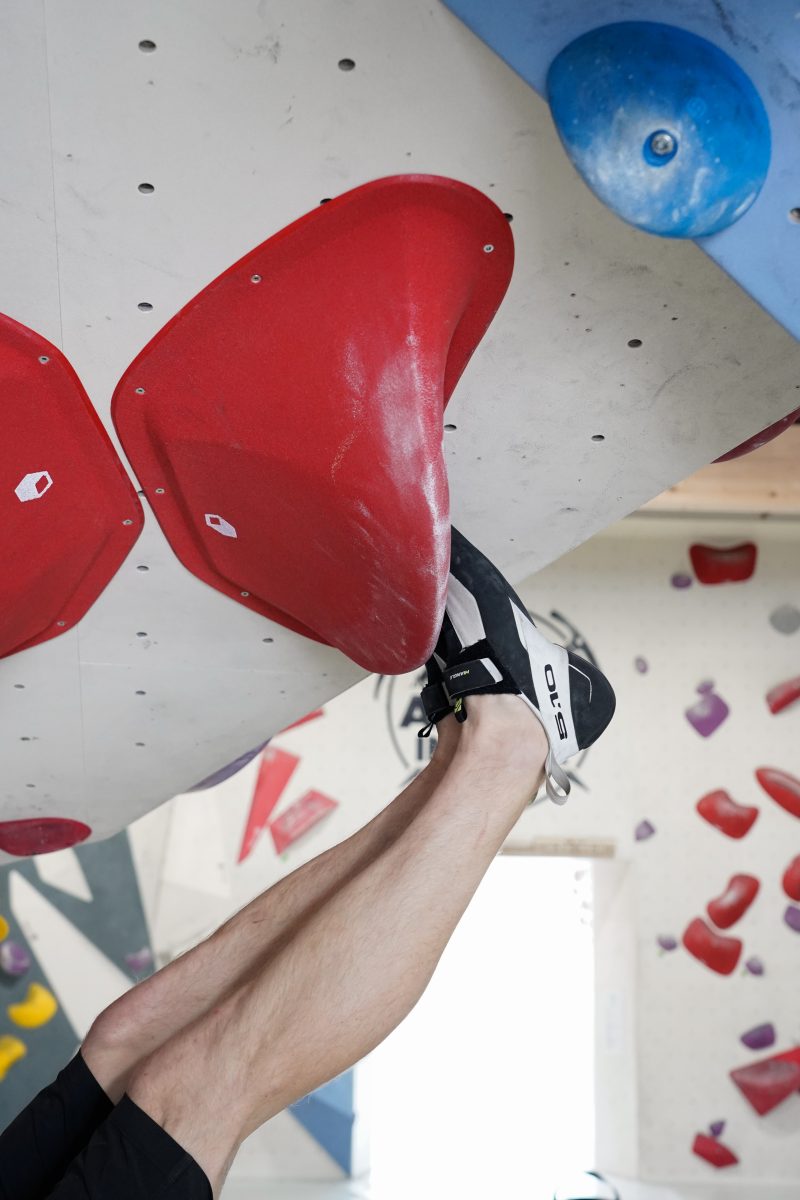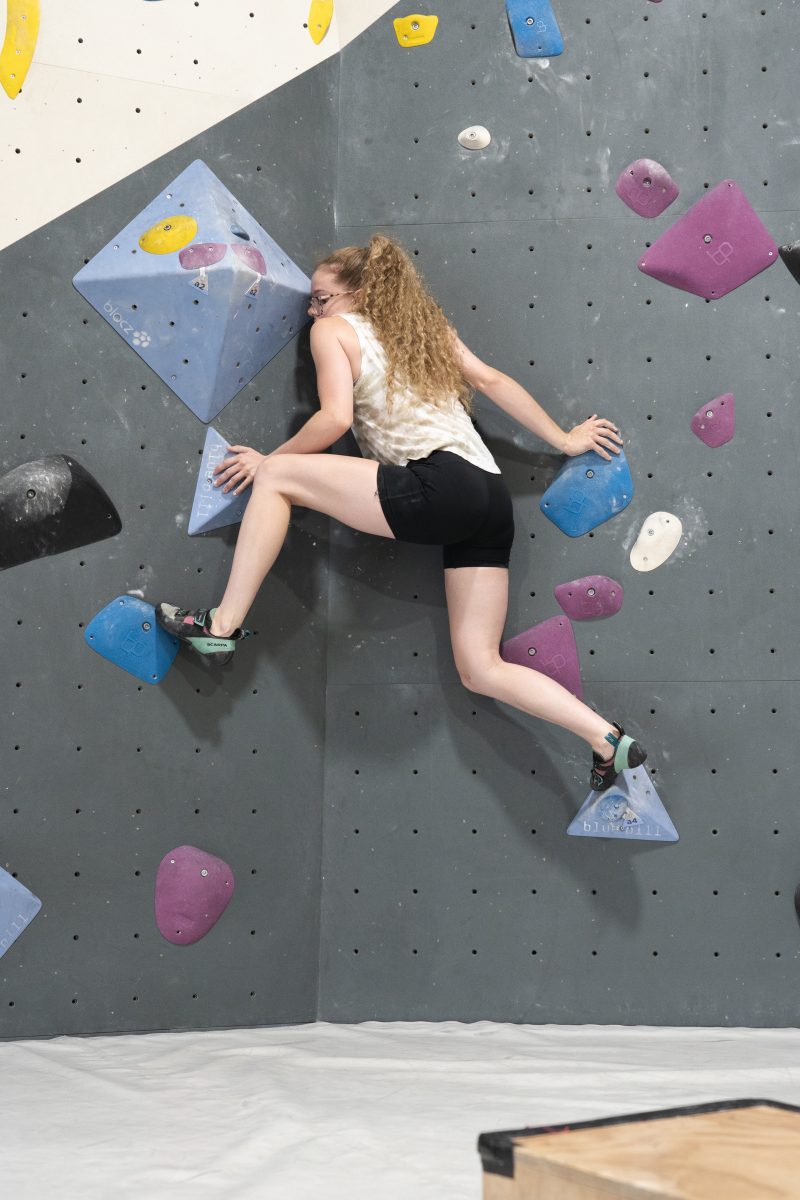5 Simple Climbing Techniques to Boost Your Grade

At the centre of all climbing is technique; a mental tool-box of skills and moves that we can use when things get tricky. It’s essential as a young or beginner climber that you put the time into learning, and eventually mastering, fundamental climbing techniques. We thought we’d share a great starting point of 5 simple on-the-wall techniques climbers can use to level-up. Many factors will determine when and where these techniques will be useful, but remember there is no set formula – so get creative!
1. Flagging
Flagging is an essential skill for climbers to master, allowing us to maintain our centre of balance on reachy or tricky terrain. You can implement this technique anywhere but it is particularly useful in situations where you have very few foot holds, so we extend one leg sideways to balance ourselves. The ‘standard flag’ is used on climbs where you only have one foot-hold and have an extended reach to the left/right, so to counterbalance we extend the opposing leg out. The ‘back flag’ requires you to place one foot behind the other and apply tension to prevent barn-dooring and align your centre of balance.

2. The Bicycle
This more-specific climbing technique uses tension to keep a climber’s feet from cutting, allowing them to climb statically and well-balanced on steep terrain. To ‘bicycle’ simply apply simultaneous pressure with both feet to a single hold/volume – one pushing down (toeing in) and one pulling in (toe-hooking). This pincer movement allows climbers to both latch and stabilise, making holds that would otherwise be hard to toe-hook suddenly useful!

3. Heel-Hook
This magical move can be the difference between sending a project or breaking into a new grade for many climbers. It utilises a climber’s strong leg muscles to pull their body into the wall and propel them upwards – basically converting your leg into another arm. To begin a heel-hook, place your heel on the desired hold and apply tension through the calf and hamstring – core tension is key here. Next, allow your hips to pull into the wall and continue to bend the knee of the leg that is heel-hooking, you’ll feel the weight shift off your arms and your body tension increase dramatically. And there you have it, the Heel-Hook!

4. Toe-Hook
Just like it’s counterpart, the toe-hook can make steep and powerful moves feel doable. Though incredibly simple, many climbers neglect to utilise this move to save energy, maintain body tension and prevent cutting. From positive volumes to slopey holds, a carefully placed toe-hook can provide balance, tension and pull-power while climbing. To implement this technique, use the top-side of your foot to hook a hold whilst maintaining a rigid 90-degree angle between your foot and leg. By applying pressure to the toe-hook, with core tension or by dropping our lower-body, you can secure the foot on off-balance or steep problems. Be careful when releasing the toe-hook on overhanging or steep terrain as this can result in the feet cutting and a full-body swing.

QUICK TIP: For routes or problems that require high-intensity heel or toe hooks, consider using climbing shoes with ample rubber around the heel-cup and toe-pad for added friction.
5. The Press!
Often newer climbers can see climbing movement as very one dimensional – we pull down, we pull down again and so on. But don’t overlook the opportunity to use a ‘Press’ when climbing, wherein, we place our body weight onto the palm of our hand and push off a hold. This move is easy, efficient and a great way to get our feet higher, prevent a barn-door or mantle onto a ledge or volume.

Be sure to follow us @alpineindoorclimbing for more climbing techniques and training knowledge! Or come into Alpine Indoor Climbing for a climbing session in our premier air-conditioned facility on the Gold Coast, Queensland.